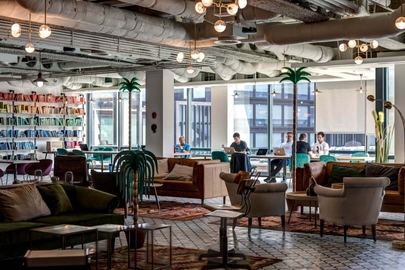The shift towards flexible workspaces is rooted in the digital revolution that has transformed the world over the recent decades. As technology has advanced, so too has our ability to work from virtually anywhere, breaking free from the constraints of the traditional nine-to-five office environment. This change reflects a deeper understanding of work-life balance and its impact on overall wellbeing and productivity.
Flexible workspaces offer variety to the static and often uninspiring traditional office setup, providing environments that adapt to the needs of the modern worker. Whether it’s through hot-desking, shared office spaces, or remote working options, these innovative environments encourage a new level of flexibility.
Unpacking the Benefits
The advantages of adopting a flexible workspace are clear. First and foremost, it allows employees to work in a manner that best suits their individual needs and preferences, leading to a noticeable increase in productivity. This personalised approach recognises that the one-size-fits-all model is outdated, embracing diversity of work styles and rhythms.
Similarly, flexible workspaces can lead to significant improvements in employee wellbeing. By offering the freedom to choose where and how to work, these spaces reduce stress and burnout, contributing to a more harmonious work-life balance. This not only benefits the individual but also translates into higher quality work and greater loyalty to the company.
Challenges and Considerations
A universal challenge for companies when moving into new office spaces is navigating issues related to communication and team cohesion. However, with careful planning and the right tools, these hurdles can be effectively overcome. The key is to maintain a balance between flexibility and structure, with the implementation of flexible workspaces and hybrid working, you can ensure that while employees have the freedom to choose their working conditions, productivity and collaboration are not compromised.
Embracing the Future
The quick shift towards flexible workspaces represents a significant change in the way we think about work and productivity. By focusing on the needs and wellbeing of employees, companies can foster environments that not only improve efficiency but also attract and retain top talent. As we look to the future, it is clear that the flexible workspace, particularly through hybrid working models, is becoming an increasingly ubiquitous aspect of the modern work landscape. This approach allows employees to find spaces often just 15 minutes from home, enhancing work-life balance and reducing commute times.
Additionally, flexible workspaces are brilliant for networking, offering vibrant, communal settings where professionals from various sectors can connect and collaborate effortlessly. Embracing this change is essential for any organisation aiming to thrive and succeed in the dynamic world of work. By integrating hybrid working into their operations, companies can offer a more adaptive and resilient work environment, proving that the flexible workspace is not just a passing trend but a fundamental shift towards a more efficient and interconnected future.


